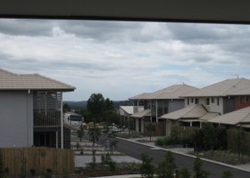
Now, worldwide, there's a severe shortage of affordable housing, as rental rates continue to climb. But in Australia, the government has enacted a plan that benefits both the renter and the investor, with cheaper rental rates and cash incentives for the investor. So, if you're looking to invest in a property with a guaranteed annual cash flow, then it's time to educate yourself about NRAS.
The National Rental Affordability Scheme (NRAS) was launched in 2008 as a way to boost the market for lower-cost rental units while encouraging property investment through tax-free incentives. Projected figures showed a drastic shortage of affordable housing for families and public service workers, and so the NRAS program was created to entice investors to help fill in that gap. The goal is to increase the number of affordable rental properties across the country by 50,000 by the year 2014.
Here's how the program works. An investor with a property currently rented at the given market rate applies for the NRAS program. When the investor reduces the rental rate by 20%, the Australian government provides a tax-free incentive per annum, for ten years, after which the rental rate returns to normal. The incentive follows the CPI and in 2011 it worked out to be $9,524 per annum.
The Australian government promises that investors will earn from $91,400 to $109,000 over the ten-year period of ownership. That's a lot of money to collect tax-free!
Of course, the tax-free cash incentive isn't the only reason to invest through the NRAS program.
An investor advertising through the NRAS program retains full control of tenant selection. Indeed, the program is largely geared toward creating affordable housing for several key groups: families, over 55s and service workers such as police officers and nurses. All tenants applying for NRAS Property must also be NRAS-certified which effectively requires them to have an income below a particular threshold.
Also, in contrast to government-subsidized housing, the investor retains a modicum of control over the rental rate, since this is determined by the going market value.
With the rent lowered and such a large pool of eligible tenants to choose from--an estimated 1.5 million tenants--an investor will find it easier to fill their rentals and won't have to worry about a surplus of vacant homes or apartments.
It's clear the Australian government is committed to this program, even in the face of the floods that devastated Queensland in early 2011. While the government did announce plans to divert roughly $264 million in funding away from the NRAS program and into clean-up and recovery efforts, they are still funding incentives on over 35,000 properties across the country, leaving investors with plenty of options for joining in this exciting new investment opportunity.
 RSS Feed
RSS Feed